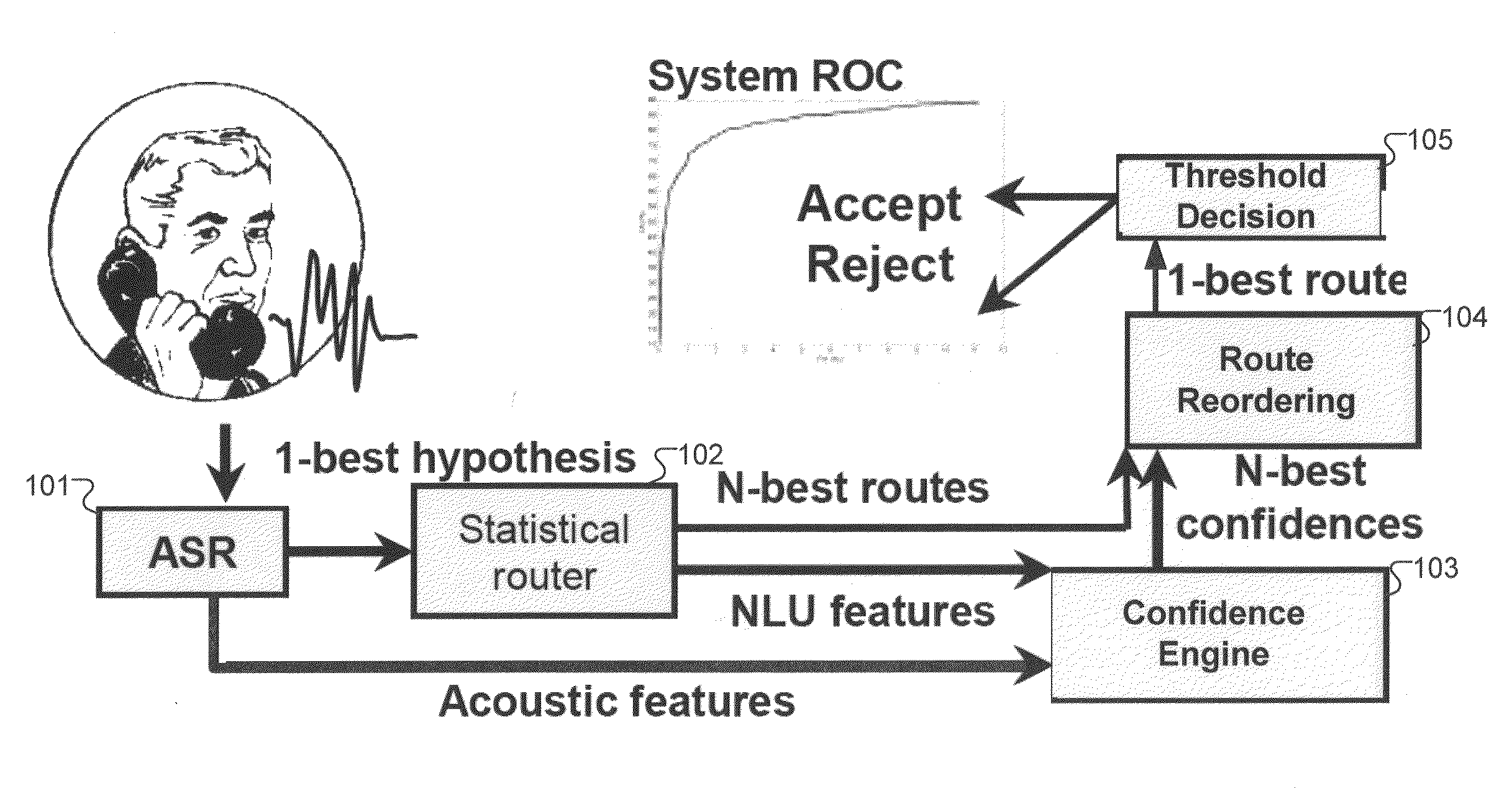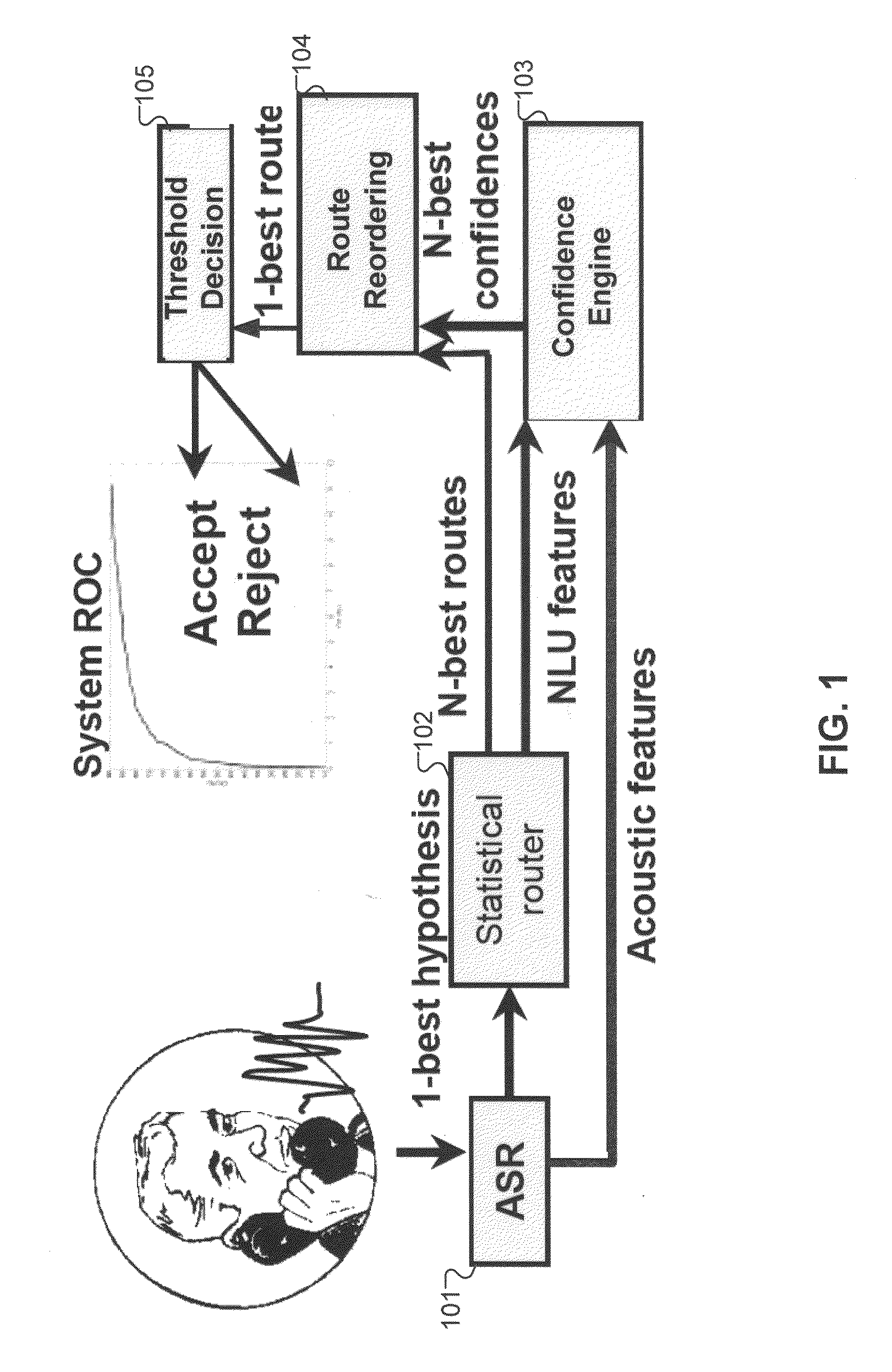Speech recognition semantic classification training
a technology of speech recognition and semantic classification, applied in the field of semantic classification applications, can solve the problem of not having a discussion on the actual effectiveness of the call routing system, and achieve the effect of improving system accuracy, improving system accuracy, and improving system accuracy
- Summary
- Abstract
- Description
- Claims
- Application Information
AI Technical Summary
Benefits of technology
Problems solved by technology
Method used
Image
Examples
Embodiment Construction
[0028]Various embodiments of the present invention are directed to techniques for building a semantic classification system such as a call router which uses few or no manual transcriptions of in-domain audio data. This helps make development of semantic classification systems cost- and time-effective for deployment in smaller applications. It also avoids the cost of manual annotation of the audio data and decreases the amount of manual work needed and implicitly the deployment time to start operating a given new system.
[0029]Training a semantic classification application such as a call router is typically based on two sets of manual annotations of the customer spoken utterances. The first set of annotations, called transcriptions, denote the text corresponding to the spoken waveforms and is used to train the Language Model (LM) used in the ASR system as well. In call routing, most error percentages are computed of the total number of calls handled by the system. The second set of an...
PUM
 Login to View More
Login to View More Abstract
Description
Claims
Application Information
 Login to View More
Login to View More - R&D
- Intellectual Property
- Life Sciences
- Materials
- Tech Scout
- Unparalleled Data Quality
- Higher Quality Content
- 60% Fewer Hallucinations
Browse by: Latest US Patents, China's latest patents, Technical Efficacy Thesaurus, Application Domain, Technology Topic, Popular Technical Reports.
© 2025 PatSnap. All rights reserved.Legal|Privacy policy|Modern Slavery Act Transparency Statement|Sitemap|About US| Contact US: help@patsnap.com



